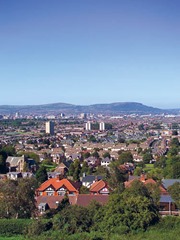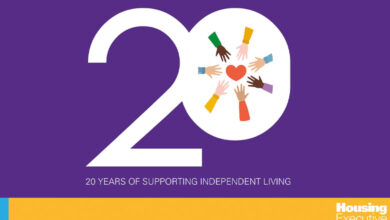Community planning
 Reform will open up new opportunities for local people to shape their neighbourhoods.
Reform will open up new opportunities for local people to shape their neighbourhoods.
The concept of community planning promises to give residents a greater say in the how their areas develop and will be one of the key changes brought about by local government reform. The Department of the Environment’s Community Planning Foundation Programme, launched last October, sets out recommended steps for the statutory transition committees and new councils as they start this new process.
Community planning is defined as a process led by councils “in conjunction with partners and communities” to develop and implement a “shared vision” for their area. The vision will be for the long term (at least 10-15 years) and relate to all aspects of community life. It will also involve organisations working together to plan and deliver “better services which make a real difference to people’s lives.”
While a local development plan will design where physical infrastructure should be built, a community plan will be much wider and include all relevant service providers.
The partners will be private sector or voluntary organisations, central government departments and agencies which operate and provide services in a council’s area.
The importance of a “solid, reliable evidence base” is emphasised by the DoE but the department also cautions against ‘reinventing the wheel’. Evidence can include published census results, progress reports on existing plans and strategies and survey information. Organisations need to share information with each other.
Community participation should be “open and inclusive” but the methods will vary according to local circumstances. Elected representatives, for example, will know how likely it is that their constituents will turn up at a public meeting or respond to a questionnaire.
There is no deadline on community planning. It is being done for the first time and may become a long-term and evolving process. Difficulties are expected but some desired benefits are also set out. These include better integration between services, higher standards of public service and a willingness to innovate and learn from others.
Community planning is not just local government’s responsibility. Government departments will be required to “promote and encourage” the concept in their work.
Councils and partners will be expected to draw up a plan as soon as they reach a consensus. A progress report will follow two years later and the plans will be reviewed at least every four years.
A community planning duty has already been introduced in England, Scotland and Wales but this was relatively straightforward as the councils were already large and had a wide range of services and powers. The combination of merging councils, adding new powers and introducing community planning represents a “considerable challenge” in Northern Ireland.
Statutory transition committees should already be seeking to understand the needs of the new area. Shadow councils need to develop and negotiate their own approach to community planning, define outcomes and agree on processes and structures.
Finally, from next April, the new councils will implement community planning, agree a vision, consider links between the community plan and the local development plan, deliver outcomes and monitor their performance.
Community planning is more than collating existing plans and practices into one document. It aims to create a “deliverable vision” for a council area. The vision should be ambitious and be backed up by “real and challenging” targets across a range of indicators. It also needs to be solution-focused rather than problem-focused.
The DoE has set out seven underlying principles to make the process work effectively (see box). Leaders must ensure that “effective and genuine” engagement with citizens and communities takes place and that residents know about the decisions that are made.
Partnership working – a frequently used phrase in the public sector – means recognising that no organisation alone can solve the problems or make the most of the opportunities in an area. All partners need to be committed to delivering results on the ground as well as signing up to a strategic vision. Successful community planning must also include businesses, voluntary organisations and community groups as well as the public sector.
Effective engagement involves giving people information and the chance to have “a greater say and influence over what happens in their community.” As explained, there is no fixed approach but councils are obliged – under the Planning Act 2011 – to produce a statement of community involvement, which explains what methods they are using.
Community planning should “reflect and respect” diversity. Each of the new councils will be required to produce a good relations policy and NILGA views the integration of those policies into wider council operations as “absolutely essential”.
Key principles
• Civic and community leadership
• Focus on outcomes
• Partnership working
• Participation and engagement
• Transparency and openness
• Equality and diversity
• People-centred delivery
Scottish insights
Councillors from Belfast visited Scotland in 2012 to understand how Northern Ireland could learn from the Scottish community planning process. Scotland has used community planning since 2003. Its 32 local authorities range from Glasgow City Council (with 600,000 residents) to the close-knit Western Isles.
The Scottish Government places a high importance on having a ‘ministerial champion’ for community planning and clearly defining both the concept and the exact relationship between central and local government.
In Edinburgh, councillors are allowed to convene local neighbourhood partnerships and the council provides facilities where staff from different organisations can work together. Dundee City Council has involved senior managers in the process and emphasises the need to manage expectations. If the approach is inclusive and seeking to prevent problems, it will take time to see results.





